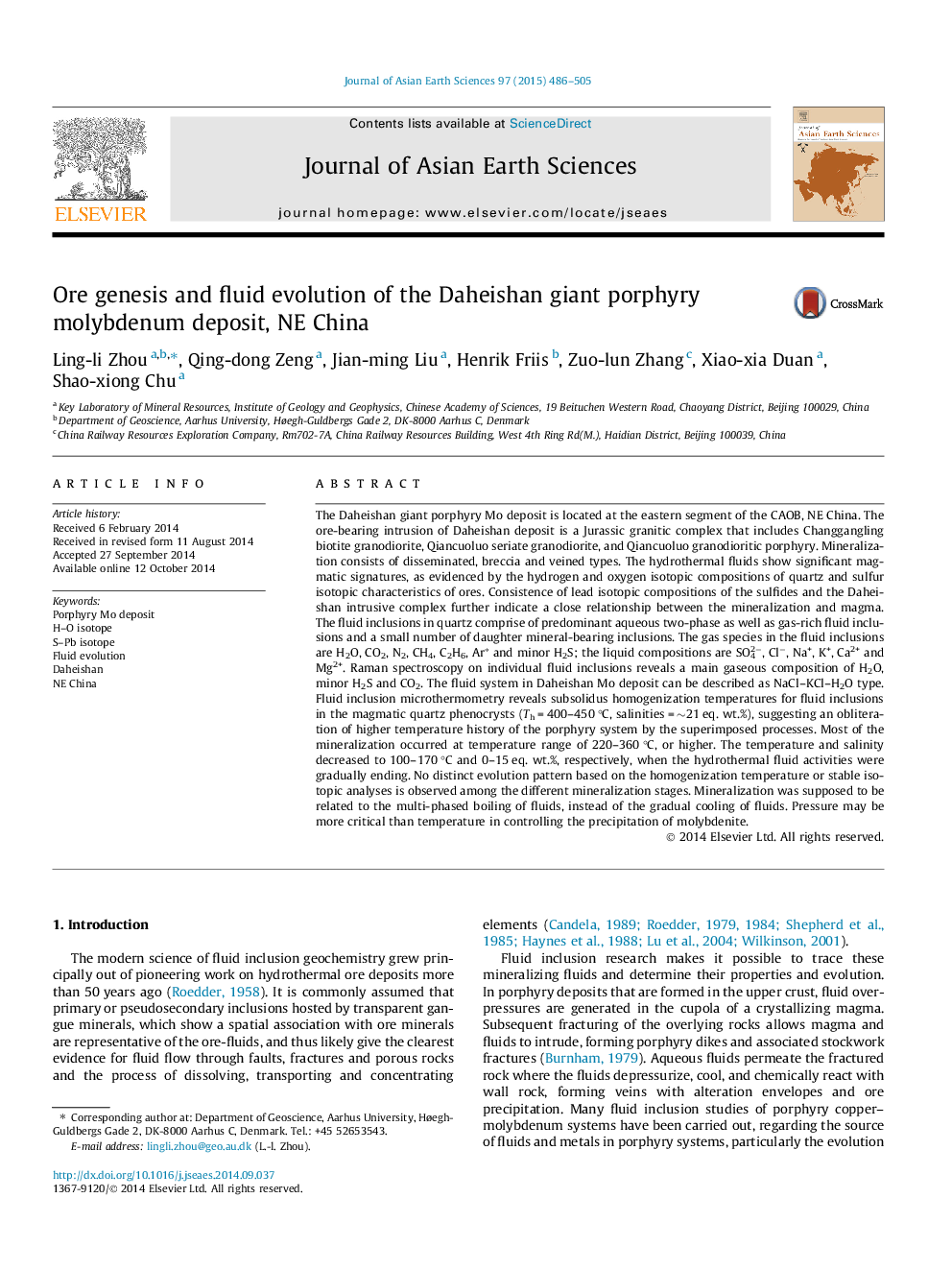| کد مقاله | کد نشریه | سال انتشار | مقاله انگلیسی | نسخه تمام متن |
|---|---|---|---|---|
| 4730451 | 1356758 | 2015 | 20 صفحه PDF | دانلود رایگان |

• The source of hydrothermal fluid in Daheishan porphyry Mo deposit was closely related to magma.
• Fluid property was deduced as H2O–NaCl–KCl type.
• Fluid evolution was deduced based on the microthermometry of fluid inclusions.
• Multi-phased boiling of fluids controlled the mineralization process.
The Daheishan giant porphyry Mo deposit is located at the eastern segment of the CAOB, NE China. The ore-bearing intrusion of Daheishan deposit is a Jurassic granitic complex that includes Changgangling biotite granodiorite, Qiancuoluo seriate granodiorite, and Qiancuoluo granodioritic porphyry. Mineralization consists of disseminated, breccia and veined types. The hydrothermal fluids show significant magmatic signatures, as evidenced by the hydrogen and oxygen isotopic compositions of quartz and sulfur isotopic characteristics of ores. Consistence of lead isotopic compositions of the sulfides and the Daheishan intrusive complex further indicate a close relationship between the mineralization and magma. The fluid inclusions in quartz comprise of predominant aqueous two-phase as well as gas-rich fluid inclusions and a small number of daughter mineral-bearing inclusions. The gas species in the fluid inclusions are H2O, CO2, N2, CH4, C2H6, Ar∗ and minor H2S; the liquid compositions are SO42−, Cl−, Na+, K+, Ca2+ and Mg2+. Raman spectroscopy on individual fluid inclusions reveals a main gaseous composition of H2O, minor H2S and CO2. The fluid system in Daheishan Mo deposit can be described as NaCl–KCl–H2O type. Fluid inclusion microthermometry reveals subsolidus homogenization temperatures for fluid inclusions in the magmatic quartz phenocrysts (Th = 400–450 °C, salinities = ∼21 eq. wt.%), suggesting an obliteration of higher temperature history of the porphyry system by the superimposed processes. Most of the mineralization occurred at temperature range of 220–360 °C, or higher. The temperature and salinity decreased to 100–170 °C and 0–15 eq. wt.%, respectively, when the hydrothermal fluid activities were gradually ending. No distinct evolution pattern based on the homogenization temperature or stable isotopic analyses is observed among the different mineralization stages. Mineralization was supposed to be related to the multi-phased boiling of fluids, instead of the gradual cooling of fluids. Pressure may be more critical than temperature in controlling the precipitation of molybdenite.
Journal: Journal of Asian Earth Sciences - Volume 97, Part B, 1 January 2015, Pages 486–505